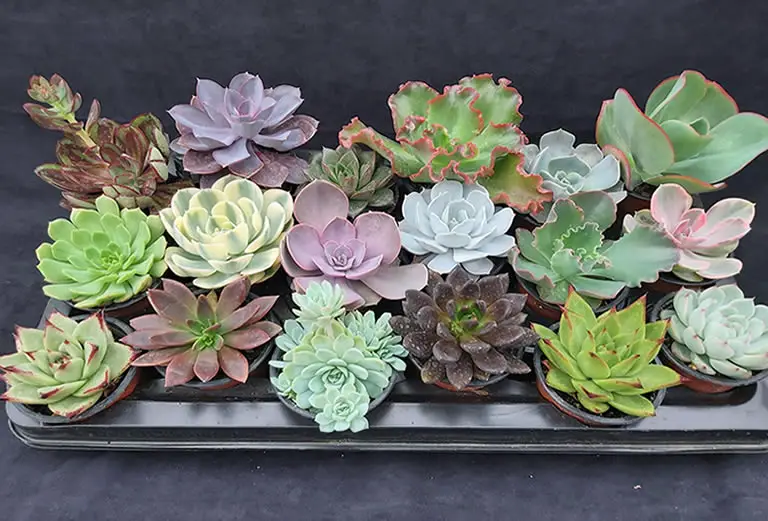If succulents were supermodels, Echeverias would be on every magazine cover. With their gorgeous rosette shapes, pastel hues, and low-maintenance vibes, they’ve completely taken over windowsills, desktops, and Instagram feeds. But there’s more to these beauties than just good looks—they’re also resilient, adaptable, and a total joy to grow once you get the basics down.
In this guide, we’ll explore how to care for Echeverias like a pro (both indoors and out) and introduce you to some of the most swoon-worthy varieties you can add to your collection.
Table of Contents
- Where Echeveria Comes From: Nature’s Art from Mexico and Beyond
- Echeveria Favorites: 18 Must-Know Varieties for Every Collection
- Light Requirements: Sunshine, Please!
- Soil Needs: Gritty and Well-Draining
- Watering Echeveria: Less Is More
- Temperature and Humidity
- Growing Echeveria Outdoors: Perfect Patio Plants
- Fertilizing: Just a Little Boost
- Pruning and Cleaning
- Propagation: Echeveria Magic
- Common Problems and Quick Fixes
- Is Echeveria Toxic?
Where Echeveria Comes From: Nature’s Art from Mexico and Beyond
Echeverias are native to semi-desert areas of Central America, Mexico, and northwestern South America.
Named after Mexican botanical artist Atanasio Echeverría y Godoy, these drought-tolerant plants evolved in arid environments with intense sun and little rainfall.
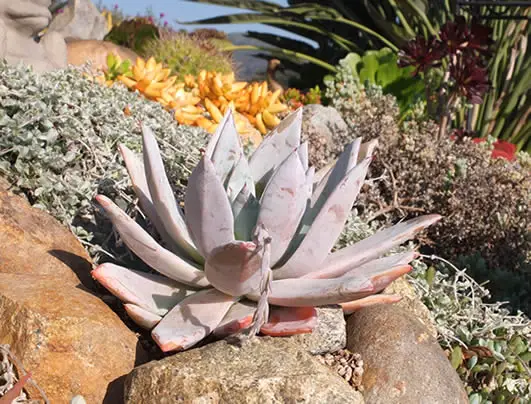
That’s why they’re so good at surviving in dry homes and thriving on the occasional forgetful plant parent.
There are over 150 known species, with countless hybrids and cultivars—so once you fall in love with one, be warned: collecting them can quickly become an obsession.
Echeveria Favorites: 18 Must-Know Varieties for Every Collection
Here’s a breakdown of some of the most popular and visually striking Echeveria varieties that work beautifully indoors or on sunny patios.
Echeveria ‘Perle von Nürnberg’: A classic hybrid with dusty pink-purple leaves and a soft pastel glow. It’s especially beautiful under bright sunlight, which brings out its rich tones.
Echeveria elegans (Mexican Snowball): This small, symmetrical rosette is a crowd favorite thanks to its pale blue-green leaves and dainty pink flowers.
Echeveria agavoides ‘Lipstick’: Features chubby, pointed leaves with vivid red edges—hence the name. It resembles an Agave, but it’s much friendlier to handle.
Echeveria ‘Black Prince’: Dramatic and moody, this variety has deep green to nearly black leaves. New rosettes emerge green and darken over time.
Echeveria ‘Afterglow’: One of the flashier hybrids, it flaunts lavender-pink foliage with a bold powdery coating. Grows larger than most!
Echeveria runyonii ‘Topsy Turvy’: A quirky and fun variety with spoon-shaped, curving leaves that twist and curl outward.
Echeveria ‘Compton Carousel’: Stunning variegation with creamy-white leaf edges. It’s slow-growing and a bit more delicate but totally worth the effort.
Echeveria lilacina (Ghost Echeveria): Silvery-lilac, almost hauntingly beautiful. Leaves are powdery and delicate, so handle with care.
Echeveria setosa (Mexican Firecracker): Covered in fine white hairs and known for its bright red-orange blooms in spring.
Echeveria ‘Lola’: A dainty hybrid with perfectly symmetrical rosettes in soft lavender, pink, and green tones.
Echeveria malaco: Less common but incredibly charming, this one has soft, almost velvet-like leaves with a frosty-blue hue.
Echeveria nodulosa: Also known as “Painted Echeveria,” this standout has green leaves with bold red markings.
Echeveria suyon: Compact and cool-toned, this rosette keeps a tidy shape and thrives in containers.
Echeveria imbricata: Often called the “Blue Rose,” its tight blue-green rosettes are excellent in arrangements or as groundcover in mild climates.
Echeveria laui: An Instagram star with pale, powdered blue-pink leaves that are super sensitive to touch—handle minimally to keep it pristine.
Echeveria agavoides: The base species of the popular ‘Lipstick’ cultivar, with glossy green leaves and a compact growth habit.
Echeveria iliacina: Silvery-gray leaves with hints of violet, especially under bright light. It’s soft, elegant, and easy to love.
Echeveria pulvinata: A fuzzy-leaved variety, often called “Chenille Plant” or “Ruby Blush” when the tips turn red.
Light Requirements: Sunshine, Please!
Echeverias are serious sun-lovers. Indoors, they need bright, direct light for at least 4–6 hours a day to maintain their color and compact form.
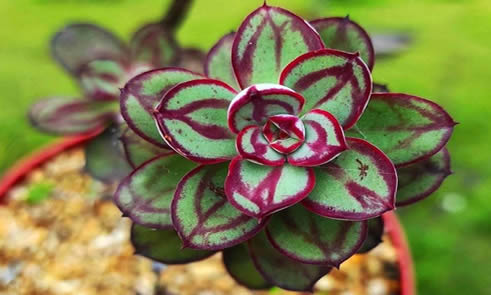
Without enough light, they’ll start stretching toward the sun (a phenomenon called etiolation), losing that iconic rosette shape.
If you can’t give them a sunny windowsill, consider using a grow light to keep them looking their best.
Soil Needs: Gritty and Well-Draining
Your Echeveria’s roots will thank you for providing a fast-draining soil mix.
You can use a store-bought cactus or succulent mix, or make your own by combining:
- 2 parts potting mix
- 1 part coarse sand
- 1 part perlite or pumice
Avoid anything that retains moisture like peat-heavy soils—they can cause root rot in a flash.
Watering Echeveria: Less Is More
The #1 mistake with Echeveria is overwatering.
These plants store water in their leaves and do best with the “soak and dry” method.
Water deeply, then wait until the soil is completely dry before watering again.
This might mean watering once every 1–3 weeks, depending on your climate.
Always water at the base—never into the rosette—to avoid rot. And make sure your pot has drainage holes.
Temperature and Humidity
Echeveria loves warm temps and dry air. Ideally, keep them between 65°F and 80°F.
They can handle dips into the 40s if dry, but prolonged exposure to frost will kill them.
They’re also not fans of humidity. These are desert plants, so skip the pebble trays and humidifiers.
Growing Echeveria Outdoors: Perfect Patio Plants
Echeverias look incredible in outdoor containers, rock gardens, or along sun-drenched walkways.
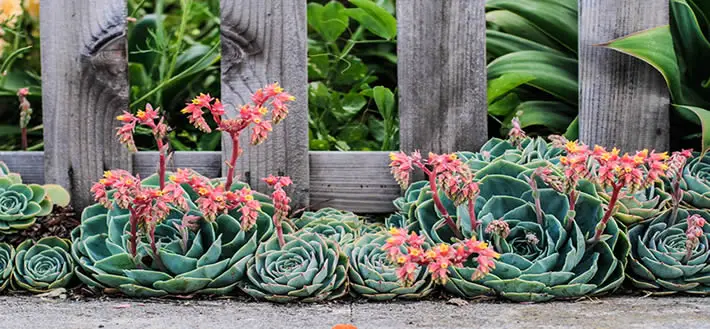
If you’re lucky enough to live in USDA zones 9–11, you can even grow them in the ground year-round.
Here are a few tips for outdoor care:
Choose the right spot: Full sun is best, especially morning light. In extremely hot climates, they may need afternoon shade to prevent sunburn.
Drainage is crucial: If planting in the ground, make sure the soil is sandy or gravelly. In containers, use terra cotta pots with drainage holes.
Water sparingly: Outdoor Echeveria may need a bit more water in summer heat, but always wait for the soil to dry completely.
Winter weather: If your winters get cold or wet, bring container plants indoors before frost hits. Cold + wet = a mushy mess.
Bonus tip: Echeverias planted outdoors often bloom more prolifically in spring and summer with tall flower stalks that attract hummingbirds and bees!
Fertilizing: Just a Little Boost
These aren’t heavy feeders.
During spring and summer, you can give them a diluted cactus fertilizer once a month.
Avoid fertilizing in fall and winter, when growth slows down or goes dormant.
Cactus fertilizer, like this one, works well with these plants.
Pruning and Cleaning
Prune away any dry or dead lower leaves to keep your plant tidy and allow airflow around the base. If flower stalks appear and start to fade, snip them off to redirect energy back to the rosette.
A soft brush or cloth can help remove dust without damaging that delicate leaf coating.
Propagation: Echeveria Magic
Echeverias are famously easy to propagate.
You can grow new plants from:
Leaf cuttings: Gently twist off a healthy leaf, let it callous for a few days, then place on top of dry soil.
Mist occasionally and be patient—roots and pups will form!
Offsets (chicks): Many varieties produce little “babies” around the base.
Simply pop them off, let them dry for a day, and replant.
Stem cuttings: For leggy plants, snip off the top rosette, let it callous, and replant for a fresh start.
If you want more in-depth instructions read our article How to Propagate Echeveria: The Easiest Way to Grow Your Collection.
Common Problems and Quick Fixes
Stretching: Not enough light. Move your plant to a brighter spot.
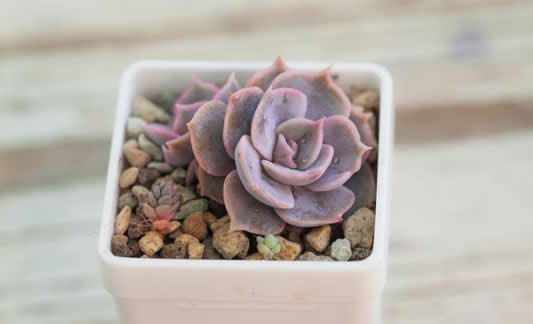
Leaf rot: Usually caused by water pooling in the rosette.
Always water at the base.
Mushy leaves: Sign of overwatering or root rot.
Remove affected parts, repot in dry soil, and reduce watering frequency.
Pests: Mealybugs love hiding in tight leaf spaces. Wipe with rubbing alcohol or treat with neem oil.
Is Echeveria Toxic?
Good news—Echeverias are non-toxic to pets and humans!
Still, those leaves aren’t snacks, so try to keep them out of nibbling range.
If you’re after a plant that’s beautiful, forgiving, and endlessly collectible, Echeveria checks all the boxes.
With a little sunlight and some hands-off care, they’ll bring sculptural beauty into your space—and might just convert you into a full-on succulent enthusiast.
Let me know if you’d like this styled for a printable guide, infographic, or mini Instagram carousel—I’d love to help bring your plant content to life!
Related Articles
You also be interested in the following articles about Echeveria:

